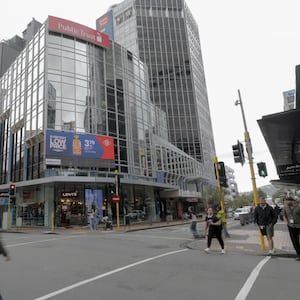Business
Bay of Plenty Tops ASB Economic Scorecard; Wellington Plummets

The latest regional economic scorecard from ASB Bank reveals a significant shift in New Zealand’s economic landscape. For the first time in nearly a decade, the Bay of Plenty has claimed the top position, while Wellington has fallen to the bottom of the rankings.
ASB economists highlighted that the Bay of Plenty region outperformed the national average in several key areas during the second quarter of 2023. These included consumer confidence, employment growth, new car registrations, and the housing market. Additionally, a robust kiwifruit season has substantially boosted incomes in the region.
Wellington’s decline is notable, as it marked a stark contrast to the performance of the Bay of Plenty. The capital city has seen a drop in economic indicators, leading to its placement at the bottom of ASB’s scorecard.
Regional Performances and Economic Drivers
In the ASB report, Southland emerged as the second-best performing region. The region benefited from strong commodity prices that have enhanced income levels, contributing to positive momentum in its housing market. This performance underscores the significance of commodity-driven economies in New Zealand, particularly in the current climate.
The report also indicates that consumer confidence has been a critical factor in the Bay of Plenty’s ascendance. With increasing optimism among residents, spending has surged, resulting in higher levels of economic activity. This trend is reflected in the rise of new car registrations, showcasing the region’s growing affluence.
Employment growth in the Bay of Plenty has further solidified its position as an economic leader. More job opportunities have attracted workers from other regions, contributing to a thriving labor market.
As the ASB scorecard illustrates, regions like the Bay of Plenty and Southland are reaping the benefits of favorable economic conditions. Meanwhile, Wellington’s situation serves as a reminder of the challenges that can arise in urban centers, particularly when economic indicators shift downward.
The ASB economic scorecard not only highlights regional disparities but also illustrates the wider economic landscape of New Zealand. As the country navigates post-pandemic recovery, these dynamics will continue to play a crucial role in shaping regional growth and development.
With a focus on specific sectors such as agriculture and commodities, the regions leading the scorecard reflect a broader trend towards diversification and resilience in the face of economic challenges. The ongoing performance of these regions will be closely monitored as they adapt to changing conditions and seek to maintain their competitive advantages.
-

 Sports2 months ago
Sports2 months agoNetball New Zealand Stands Down Dame Noeline Taurua for Series
-

 Entertainment2 months ago
Entertainment2 months agoTributes Pour In for Lachlan Rofe, Reality Star, Dead at 47
-

 Entertainment3 weeks ago
Entertainment3 weeks agoNew ‘Maverick’ Chaser Joins Beat the Chasers Season Finale
-

 Sports2 months ago
Sports2 months agoSilver Ferns Legend Laura Langman Criticizes Team’s Attitude
-

 Politics4 weeks ago
Politics4 weeks agoNetball NZ Calls for Respect Amid Dame Taurua’s Standoff
-

 Entertainment2 months ago
Entertainment2 months agoKhloe Kardashian Embraces Innovative Stem Cell Therapy in Mexico
-

 World3 months ago
World3 months agoPolice Arrest Multiple Individuals During Funeral for Zain Taikato-Fox
-

 Sports3 months ago
Sports3 months agoGaël Monfils Set to Defend ASB Classic Title in January 2026
-

 Entertainment1 month ago
Entertainment1 month agoTyson Fury’s Daughter Venezuela Gets Engaged at Birthday Bash
-

 Sports1 month ago
Sports1 month agoHeather McMahan Steps Down as Ryder Cup Host After Controversy
-

 World2 weeks ago
World2 weeks agoSevere Winds Hit New Zealand, Over 100 Flights Canceled
-

 Entertainment1 month ago
Entertainment1 month agoTyson Fury’s Daughter Venezuela Gets Engaged at Birthday Bash



















